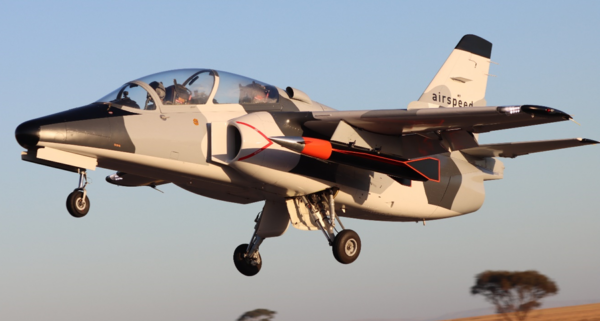South Australia driving high-tech defence innovation
19 September 2024
Rapidly translating disruptive new technologies into Australian Defence Force (ADF) capability is essential for preparing our nation for future challenges.
We’re regularly reminded by events across the globe that enemies can interfere with the affairs of another country without ever physically crossing their border. Cyber-attacks on infrastructure can cripple daily activities and information warfare has influenced decisions.
What’s more, with the Defence environment increasingly benefiting from technological advances, it’s critical our understanding of how humans interact with those technologies evolves accordingly.
The Defence Strategic Review recognises that to keep pace with these advances, a whole-of-nation approach is needed to ensure Australia has capability across the traditional domains of land, air, sea and now space and cyber as well.
The AUKUS partnership also presents significant opportunities under Pillar II, to deliver advanced technology capabilities.
South Australia has a long and successful history of collaborative defence research and development that transforms Defence capabilities.
In the current geopolitical environment, now more than ever, the State is embracing the opportunity to demonstrate its leadership in the field through collaboration across government, industry and academia.
State Government-led coordination fast-tracks innovation
Sumen Rai is the Director of the Defence Innovation Partnership (DIP); a South Australian Government initiative fostering collaboration between South Australia’s three public universities, the Defence Science and Technology Group (DSTG) and industry.
“Our role is to build up the local ecosystem of defence capability, particularly in areas Defence is targeting,” Ms Rai said.
“About 80 percent of what we do is about relationship building.
“We’re in constant contact with innovation leaders at the universities, we have great coverage of what industry is doing and we have excellent contacts in Defence who are cleared to work on projects,” Ms Rai said.
Since it was established in 2018 the DIP has supported South Australian researchers and industry undertaking defence-relevant research and development, managing grant funds that act as a catalyst for innovation.
The organisation’s Collaborative Research Fund (CRF) has supported 35 South Australian-based projects since 2018, in areas such as electronic and information warfare, quantum and undersea technologies. The CRF has provided more than $3.4 million in financial support from state government, leveraging $10.8 million from Commonwealth, industry, and university contributions.
Last year it also launched a $4.6m Activator Fund, to support larger-scale defence research and development. It requires matched contributions from program participants, with a goal to speed-up the translation of real-world capability for the ADF.
CRF funding catalyst to further success
One project that was awarded $150,000 under round 7 of the CRF in 2024, has now gone on to receive an additional $395,000 through Australia’s Economic Accelerator (AEA) Seeds Grant program.
The project led by University of Adelaide’s Dr Agnieszka Kumorkiewicz-Jamro, under the guidance of SAiGENCI’s Professor Christopher Sweeney was entitled ‘Revolutionising Radiation Protection: World first multiorgan pharmaceutical radiation protection for defence capability and civilians’ (known as the Daisy Project).
The cutting-edge Defence research project aims to commercialise the first drug developed to protect multiple internal organs from radiation sources including space and aircrew at risk of cosmic radiation, allied health professionals and civilian emergency service personnel
If successful, the project will be deployed in medical and defence applications.
Ms Rai commended the project as a true showcase of cutting-edge Defence research in South Australia.
“The project highlights the variety of R&D required to bolster Defence capability and the importance of follow-on funding to support the subsequent phases of development.”
Specialist Commercial Manager for the University of Adelaide Anne Donaldson acknowledged the CRF as a springboard for the project’s initial launch success.
“The CRF funding proved invaluable in the launch of the project. Since then, we have gone on to secure additional financial support from the latest round of AEA Seed Grants,” Ms Donaldson said.
“Through the current AEA funding, we aim to accelerate the manufacturing and development of our solution into a scale-up.”
Ms Rai highlighted that of the 98 total projects funded through AEA nationwide, 13 were led by South Australian universities, demonstrating the state’s success in translating defence-relevant research into operational outcomes.
In addition to the radiation protection project, three other Defence-related projects led by South Australian researchers Dr Sarah Scholten and Dr John Codrington from the University of Adelaide and Professor Justin Chalker from Flinders University shared in funding totalling approximately $1.3 million.
Find out more about the Defence Innovation Partnership.
Image courtesy of the University of Adelaide.








